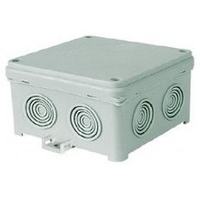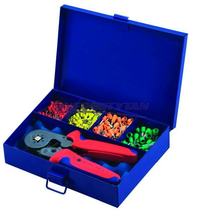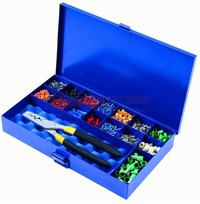The question is as in the topic, namely:
Is there any clever solution to connect several cables (wire and cord) together to one place. This is a standard problem with all kinds of LED power supplies, halogen fittings, etc.
Is there anything else besides building branches from WAGO cubes, connectors or soldering?
How to make this type of connection so that it takes up little space and is safe? What utensils to use?
Is there any clever solution to connect several cables (wire and cord) together to one place. This is a standard problem with all kinds of LED power supplies, halogen fittings, etc.
Is there anything else besides building branches from WAGO cubes, connectors or soldering?
How to make this type of connection so that it takes up little space and is safe? What utensils to use?



 Another gadget for a box, and a pocket knife can do more (according to that rest of the forum
Another gadget for a box, and a pocket knife can do more (according to that rest of the forum 


